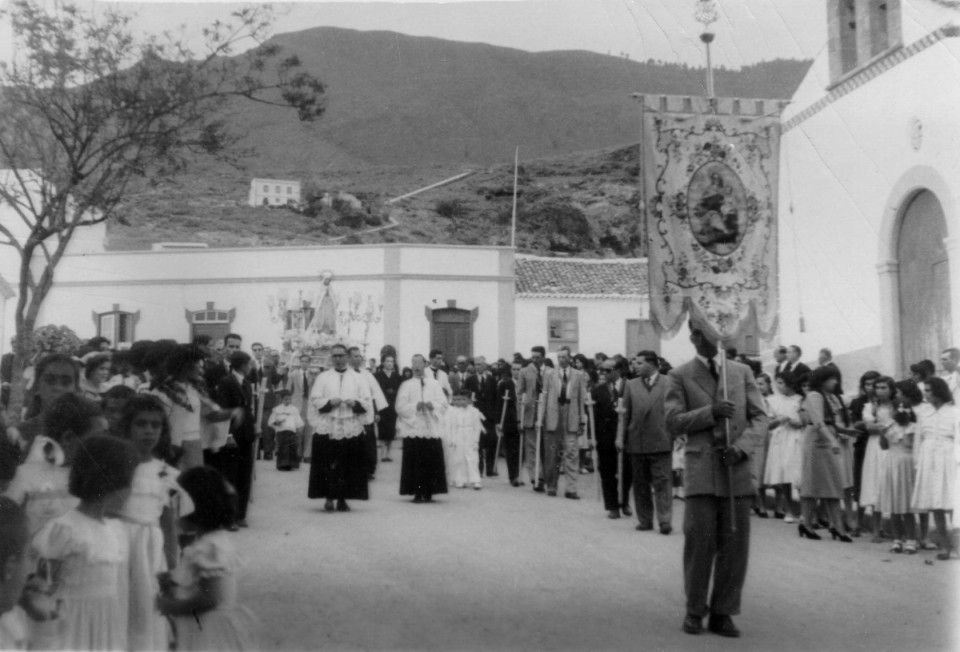May 13 2020
Los Menores is situated just over 300 metres above sea level, 5 kilometres from the nucleus of Adeje, covers 28 k2, and is circled by Tijoco Alto, Las Cañades, Ifonche, Armeñime and Tijoco-Bajo-La Hoya.
The neighbourhood is relatively young, formed along the edge of the Barranco de Ajabo, and grew up with the building of the road to Guía de Isora – so in 1950 there were 57 registered inhabitants, 259 in 1991 and today it is home to 1592 people.
Historian Nelson Díaz Frías says the name Los Menores has been mentioned in documents since the 18th century, certainly in 1795 when Domingo Álvarez and Melchora Domínguez, residents of Taucho declared in a statement that they had land in the zone, and is possibly a reference to the younger children (‘los menores’) of the Mencey or King of Adeje, who ruled in the area after the conquest of Tenerife.
The first homes in the region date from the 16th century, built in the barranco de Ajabo. In the 18th century the lands belonged to the Casa Fuerte (the Adeje Fort House) and the residents of Taucho, and the lands were at the crossroads of a Camino Real (royal walk) between Guia de Isora, the Aponte Walk the Tablada Walk and the Curte Walk. It was used by many grazing pastors and a road by residents of Taucho to go down to the coast in winters. However the beginnings of a proper resident population in Los Menores probably began with the tomato cultivation and the beginning of the road to Guía de Isora.
Historical documents from the Adeje archives, dated January 25th 1927, refers to the existence of a tomato packing building, belonging to the Fyffes company who were hugely present in the borough during this time.
Origins of the fiesta in honour of La Virgin de Fátima
The origins of the celebration seem to have begun when a resident of Los Menores brought a statue to their home from Adeje town. Doña Carmen Álvarez Hernández would create a chapel setting in her home and people would come to pray and celebrate mass. One of her granddaughters remembers that Fr Elías “would bring the statue from Adeje to my grandmother’s house. She was placed on a table in the living room, decorated as if you were in a chapel”. Carmen, the granddaughter, says the neighbours would come to pray as the door was always open, and they would bring flowers. Mass was usually on a Thursday, she told us, and remembers her mother and aunt and grandmother would be trying to find as many chairs as possible to accommodate the people who would attend.
The hermitage is actually located where the old salon of the Fyffes packing station was in Los Menores – the company handed over the section in 1979. And it was through the efforts of the local residents that the old salon was converted into the hermitage that stands today.
Oral tradition tells us that the statue of the Virgin de Fátima was donated to Adeje by Doña Etelvina Alonso, the wife of Don Pedro de la Casa, the town doctor, in the 1950s. The statue was donated to make good a promise the woman made following the recovery of her son Agustín from an illness.
Since then the residents of Los Menores have celebrated the festival of Our Lady of Fatima, though this year those celebrations will be somewhat muted.
Adeje History and Heritage Department (Unofficial translation)
Sources:
De las Casas Alonso, Pedro. Introducción a la Historia de Adeje, Cabildo de Tenerife, 1997, p. 48.
Díaz Frías, Nelson. La Historia de Adeje, Ayto Adeje-CCPC, 1999, P121-122.
Archivo Municipal Adeje.
Telephone interview with Carmen, granddaughter of Doña Carmen Álvarez Hernández, May 11 2020
Telephone interview with Don Manual Jesús Ramos (Adeje,1942), May 8 2020
